By Anna Opryszko
Our library collections are always growing, and the Wangensteen Historical Library of Biology and Medicine is no exception. But in a historical collection like the Wangensteen, which holds about 73,000 volumes already, how do you decide what still needs to be added?
Collection development at the Wangensteen focuses on examining the current strengths of the library, identifying gaps, and seeking out new materials that represent the multitude of experiences of health and illness, rather than one perspective. At its foundation, the purpose of acquiring new materials is to shift the Wangensteen’s collection in more equitable directions, and to actively incorporate these materials into scholarship, outreach, instructional sessions and exhibits. The Wangensteen’s collection development mission is part of the wider University Libraries’ initiative to amplify and increase diverse voices in all of our collections.
Keep reading to get a sneak peak at six books that the Wangensteen purchased in the last year!
Mushroom mania
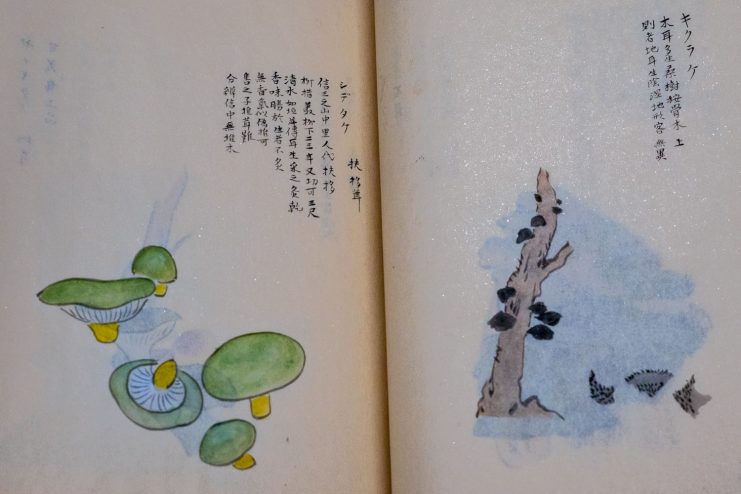
Shinyo kinpu. Wangensteen Historical Library.
First up is a favorite of the Health Sciences librarians. This handwritten and hand-illustrated Japanese manuscript contains 70 brush paintings of mushrooms from the early 1800s. The pages are embedded with mica, so it sparkles as you flip through! The illustrations may look simple and charming, but the book is also full of valuable information: notes on regional variations, which mushrooms are poisonous, and references to other texts on mycology. This book connects well with the Wangensteen’s already surprisingly deep collection of mushroom texts, and is a valuable contribution to our growing non-Western resources that reflect medicine and science as products of culture.
Accounting by hand
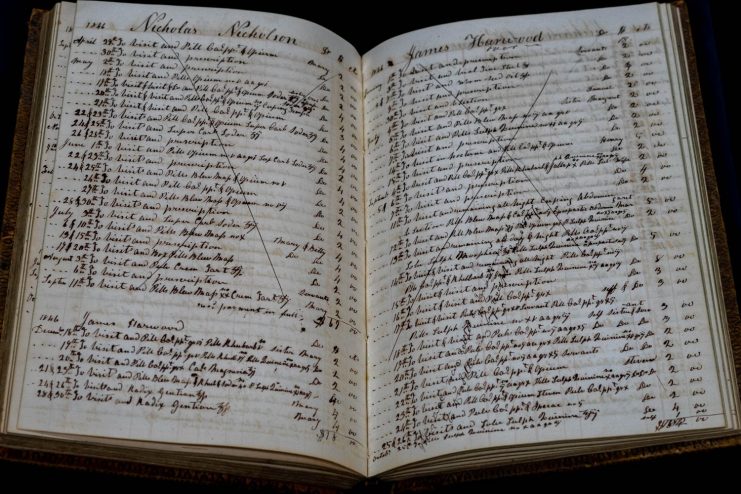
Medical ledger of patient’s visits and accounts, 1838-1851. Wangensteen Historical Library Oversize QV S467m 1838.
This physician’s ledger lists patient visits and accounts. Ledgers are incredibly rich sources for understanding historical contexts, and are too often overlooked as relatively “ordinary” in comparison to other rare materials. This particular ledger belonged to Dr. John Sellman of Anne Arundel, Maryland in the 1830s and 1840s. A closer look reveals the costs for various medical treatments, the medications that were prescribed, and that Dr. Sellman attended to both white and Black communities in his county. Studying dynamic resources such as this ledger grants access to histories that are critically important to social justice conversations and pedagogical practices.
A manuscript medley
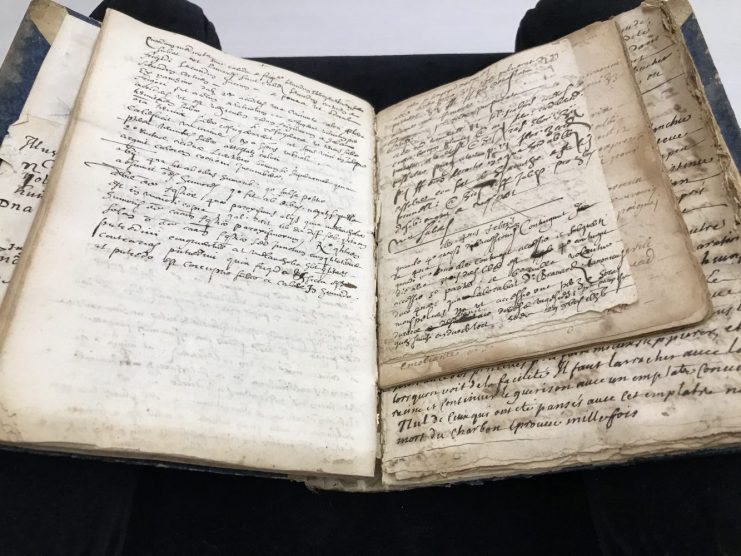
A nonce collection of late 17th to 18th century French manuscripts. Wangensteen Historical Library WZ220 N812 1650.
It only takes a glance at this book to see that it’s a bit unusual, with chunks of pages of various sizes. That’s because it is a collection of four separate manuscripts written by four different people in the second half of the 17th century, recording cures for various ailments and diseases. Three sections are in French and one is in Latin; one section seems to include lecture notes, and another seems to be copied from a published book; and all are bound in a cover that is at least 100 years younger than the pages within. This acquisition adds to the Wangensteen’s growing collection of handwritten recipe books, representing a diversity of experience of health and illness around the world and across time. Explore more here: z.umn.edu/receiptbooks
Obstetrical advances in the Americas
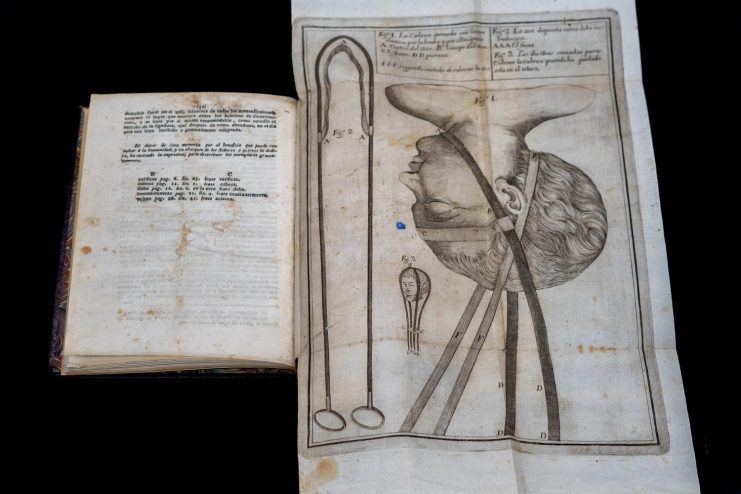
Memoria sobre una invención fácil y sencilla para extraer las criaturas clavadas en el paso sin riesgo de su vida. Wangensteen Historical Library WZ260 E75m 1798.
This book, published in Guatemala in 1798, was written by a Venezualan-born doctor and surgeon Narciso Esparragosa y Gallardo. It illustrates the medical procedure that Dr. Esparragosa y Gallardo invented to protect newborns during difficult deliveries, the “asa elastica,” a type of forceps. As a first edition, it is one of only three known copies in the world, and is a rare example of a significant medical contribution authored and published in the Americas during this era. The Wangensteen’s collection is particularly strong regarding women’s health in Western Europe, and this acquisition adds a perspective on this topic from a different geographical area.
Life in Chittagong
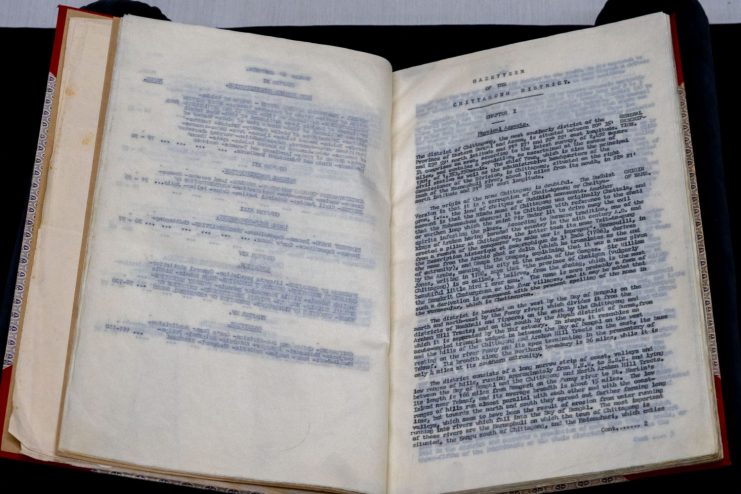
Eastern Bengal district gazetteers : Chittagong. Wangensteen Historical Library Oversize QTB O54e 1908.
At first, this report looks pretty unremarkable, but it contains a wealth of information. Written by a British civil servant in the early 20th century and typed on onion skin (a thin, translucent paper), the contents are full of rich detail about the conditions of the province of Chittagong in Eastern Bengal while under British colonial rule. It documents the local agricultural industries, diet and eating habits, tea production, and the emergence of cholera during times of particular economic hardship. Recently, there has been an increased interest in purchasing materials for the Wangensteen to focus on economic precarity as it relates to diet and health, and this report provides a fascinating perspective.
All the tips and tricks you’ll need
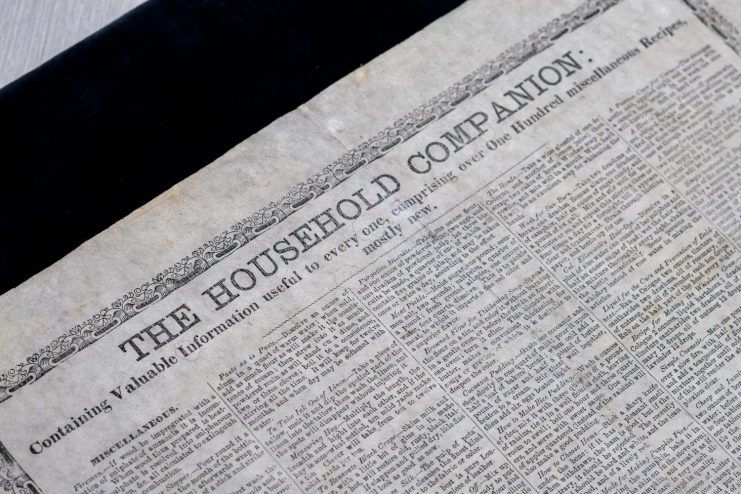
The Household companion. Wangensteen Historical Library Flat QV H835 1861.
Have you ever needed to quickly look up recipes for ginger cakes, suggestions for soothing bee stings, and instructions for starching your dresses in order for them to not catch on fire – all in one place? In 1860s New York, you could find such a document! This broadside (a large sheet printed on one side only) contains over 100 recipes, ranging from the most delicious to the most practical. As a piece of ephemera, an item that was meant to have only short-term use, this broadside elevates voices and stories of nutrition and economic precarity that have historically been silenced.
An invitation
Interested in perusing any of these items in person? Have a question about something else at the Wangensteen? Need help navigating our catalog? Just email wanghist@umn.edu and we will be happy to help!




